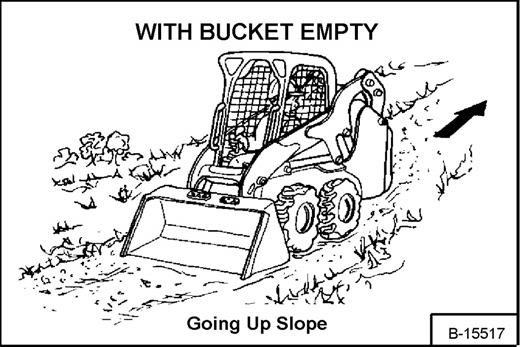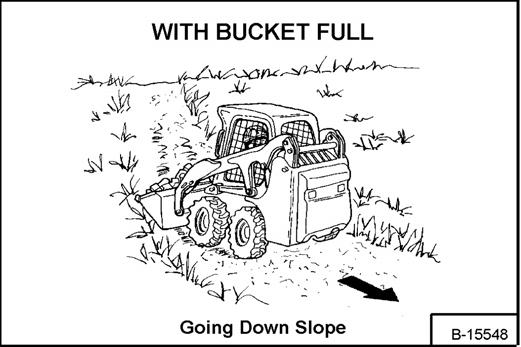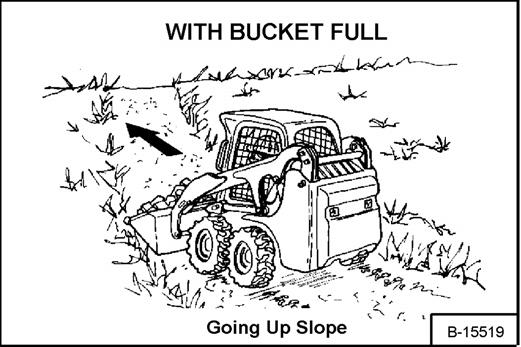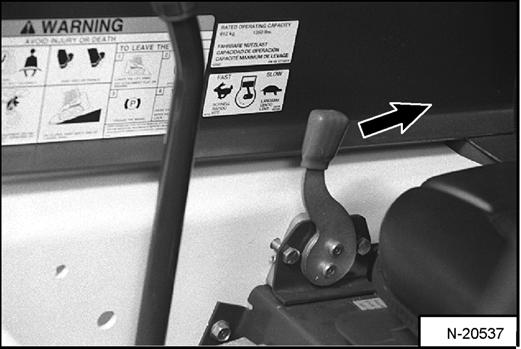
7 minute read
STOPPING THE ENGINE
Figure OI-48
Pull the engine speed control fully backward [Figure OI48] to decrease the engine speed.
Turn the key switch to the STOP position [Figure OI-46] (Standard Panel) or press the STOP Button (Item 2) [Figure OI-47] (Deluxe Panel).
Warning
Do not use ether with glow plug (preheat) systems. Explosion can result which can cause injury, death, or severe engine damage.
W-2071-0903
Monitoring The Display Panel
Figure OI-49
Figure OI-50
After the engine is running, frequently monitor the right instrument panel [Figure OI-49] (Standard Panel) and [Figure OI-50] (Deluxe Panel) for error conditions.
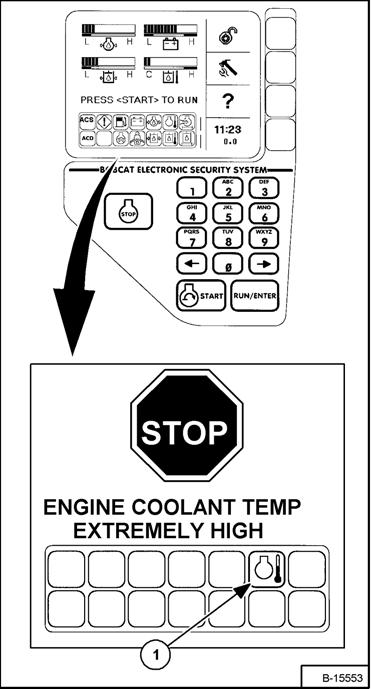
The associated Icon will be ON if there is an error condition.
EXAMPLE: Engine Coolant Temperature is High.
Standard Panel
The Engine Temperature Icon (Item 1) [Figure OI-49] will come ON.
Press and hold the LIGHTS Button for 2 seconds and one of the following SERVICE CODES will be displayed in the hourmeter / code display:
08-10 Engine Coolant Temperature High or
08-11 Engine Coolant Temperature Very High
Deluxe Panel
The Engine Temperature Icon (Item 1) [Figure OI-50] will be ON.
The SERVICE CODE will be in the hourmeter / code display (see above).
In addition, the Deluxe Panel display screen will describe the extreme condition that can cause damage to the engine or loader systems [Figure OI50]
Warning And Shutdown
When a WARNING condition exists, the associated Icon light will come ON and there will be 3 beeps from the alarm. Be aware that, if this condition is allowed to continue, there may be damage to the engine or loader hydraulic systems.
When a SHUTDOWN condition exists, the associated Icon light will come ON and there will be a continuous beep from the alarm and the monitoring system will automatically stop the engine in 10 seconds. The engine can be restarted to move or relocate the loader.
The SHUTDOWN feature is included with the Deluxe Right Panel or a Factory Option with the Standard Panel.
The SHUTDOWN feature is associated with the following Icons:
General Warning
Engine Oil Pressure
Engine Coolant Temperature
Hydraulic Oil Temperature
Hydrostatic Charge Pressure
Whenever STOP appears on the display screen, lower the lift arms all the way, put the attachment flat on the ground and stop the engine to prevent damage to the engine or loader systems.
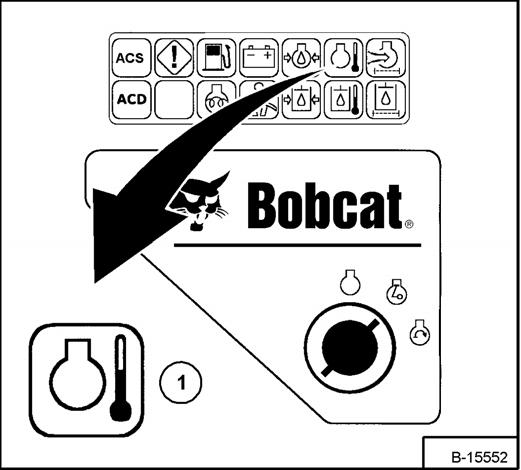
Attachments And Buckets
NOTE: Warranty is void if non-approved attachments are used on the Bobcat Loader.
Warning
Never use attachments or buckets which are not approved by Bobcat Company. Buckets and attachments for safe loads of specified densities are approved for each model. Unapproved attachments can cause injury or death.
W-2052-0500
The dealer can identify, for each model loader, the attachments and buckets approved by Bobcat. The buckets and attachments are approved for Rated Operating Capacity and for secure fastening to the BobTach.
The Rated Operating Capacity for this loader is shown on a decal in the operator cab. (See SKID STEER LOADER SPECIFICATIONS on Page SPEC-3.)
The Rated Operating Capacity is determined by using a standard dirt bucket, and material of normal density, such as dirt or dry gravel. If longer buckets are used, the load center moves forward and reduces the Rated Operating Capacity. If very dense material is loaded, the volume must be reduced to prevent overloading.
Use the correct size bucket for the type and density of material being handled. For safe handling of materials and avoiding machine damage, the attachment (or bucket) should handle a full load without going over the Rated Operating Capacity for the loader. Partial loads make steering more difficult.
Load varies with model of pallet fork being used.
B-17255
The maximum load to be carried when using a pallet fork is shown on a decal located on the pallet fork frame (Item 1) [Figure OI-52]
See your Bobcat Dealer for more information about pallet fork inspection, maintenance and replacement. See your Bobcat Loader dealer for Rated Operating Capacity when using a pallet fork and for other available attachments.
Exceeding the Rated Operating Capacity [Figure OI-51] can cause the following problems:
•Steering the loader may be difficult.
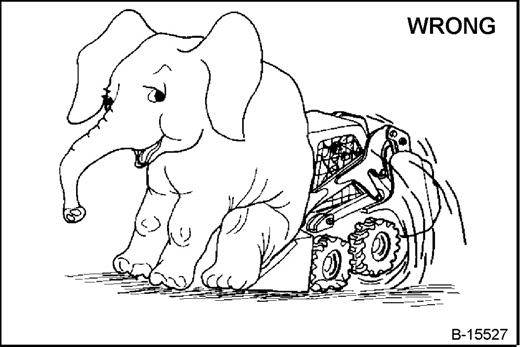
•Tires will wear faster.
•There will be a loss of stability.
•The life of the Bobcat Loader will be reduced.
AVOID INJURY OR DEATH
Do not exceed Rated Operating Capacity (ROC). Excessive load can cause tipping or loss of control.
W-2053-0903
ATTACHMENTS AND BUCKETS (CONT’D)
Hand Lever Bob-Tach
Installing The Bucket Or Attachment
The Bob-Tach is used for fast changing of buckets and attachments. See the appropriate Attachment Operation & Maintenance Manual to install other attachments.
Tilt the Bob-Tach backward until the cutting edge of the bucket (or other attachment) is slightly off the ground [Figure OI-54].
Stop the engine and exit the loader.
Warning
Before you leave the operator’s seat:
•Lower the lift arms, put the attachment flat on the ground.
•Stop the engine.
•Engage the parking brake.
•Raise seat bar
• (Foot Pedal Controls) Move pedals until both lock.
Pull the Bob-Tach levers all the way up (Item 1) [Figure OI-53]
Enter the loader and perform the PRE-STARTING PROCEDURE. (See PRE-STARTING PROCEDURE on Page OI-20.)
Lower the lift arms and tilt the Bob-Tach forward.
Drive the loader forward until the top edge of the BobTach is completely under the top flange of the bucket [Figure OI-53] (or other attachment). Be sure the BobTach levers do not hit the bucket.

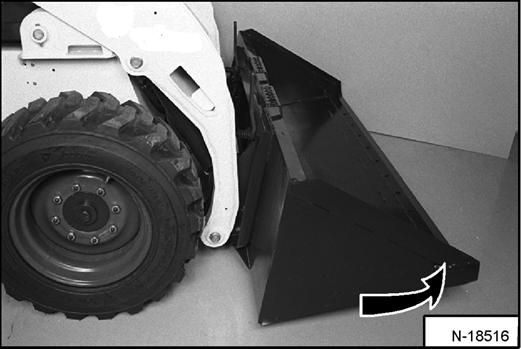
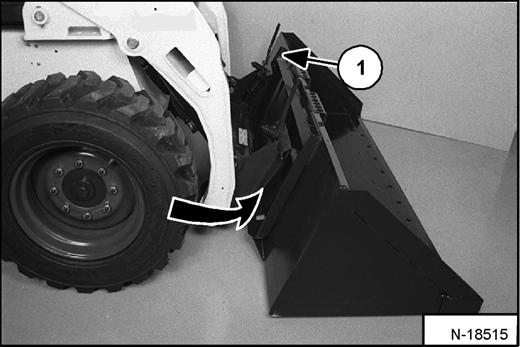
Figure OI-54
Push down on the Bob-Tach levers until they are fully engaged in the locked position (Item 1) [Figure OI-55] (wedges fully extended).
ATTACHMENTS AND BUCKETS (CONT’D)
Hand Lever Bob-Tach (Cont’d)
Figure OI-56
Warning
Bob-Tach wedges must extend through the holes in attachment. Lever(s) must be fully down and locked. Failure to secure wedges can allow attachment to come off and cause injury or death.
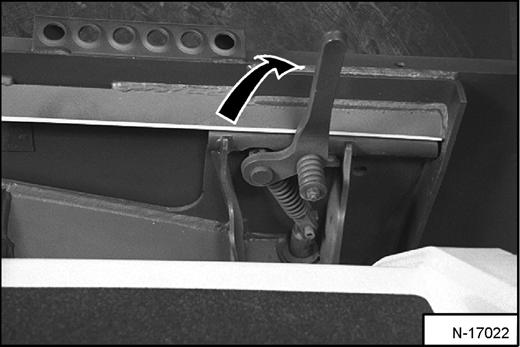
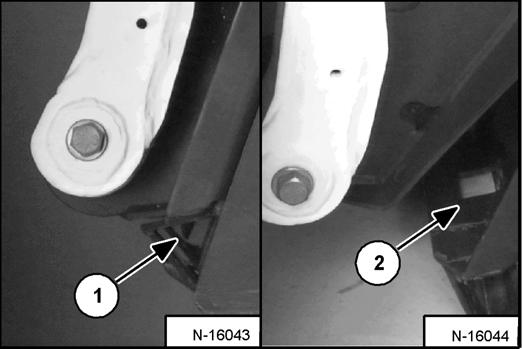
W-2102-0497
Removing The Bucket Or Attachment
Lower the lift arms and put the attachment flat on the ground and lower or close the hydraulic equipment.
•If the attachment is hydraulically controlled (combination bucket, backhoe, etc.), stop the engine and relieve hydraulic pressure in the auxiliary circuit. (See Releasing Hydraulic Pressure (Loader and Attachment) on Page OI-14.)
Raise the seat bar, unfasten the seat belt, set the parking brake and exit the loader.
Warning
Before you leave the operator’s seat:
•Lower the lift arms, put the attachment flat on the ground.
•Stop the engine.
•Engage the parking brake.
•Raise seat bar
• (Foot Pedal Controls) Move pedals until both lock.
W-2328-0798
Warning
Bob-Tach levers have spring tension. Hold lever tightly and release slowly. Failure to obey warning can cause injury.
W-2054-1285
Enter the loader.
Perform the PRE-STARTING PROCEDURE. (See PRESTARTING PROCEDURE on Page OI-20.).
Start the engine.
Release the parking brake.
Be sure the lift arms are all the way down. Tilt the BobTach forward.
Figure
Move the loader backward, away from the bucket or attachment [Figure OI-58]
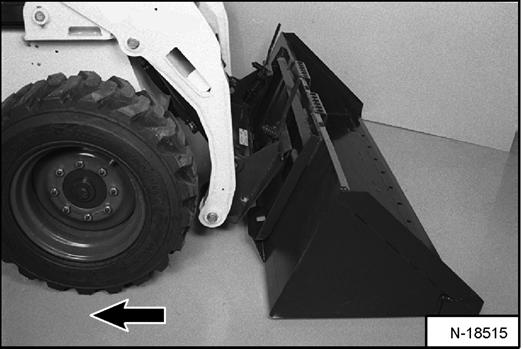
ATTACHMENTS AND BUCKETS (CONT’D)
Power Bob-Tach
Installing The Bucket Or Attachment
The Bob-Tach is used for fast changing of buckets and attachments. See the appropriate Attachment Operation & Maintenance Manual to install other attachments.
Perform the PRE-STARTING PROCEDURE. (See PRESTARTING PROCEDURE on Page OI-20.)
Lower the lift arms and tilt the Bob-Tach forward.
Drive the loader forward until the top edge of the BobTach is completely under the top flange of the bucket [Figure OI-60] (or other attachment).
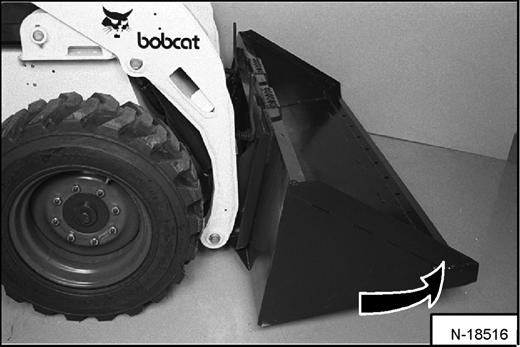

Push and hold BOB-TACH "WEDGES UP" switch (Front Accessory Panel) [Figure OI-59] until levers are in unlocked position (Item 1) [Figure OI-59] (wedges fully raised).
Warning
Bob-Tach wedges must extend through the holes in attachment. Lever(s) must be fully down and locked. Failure to secure wedges can allow attachment to come off and cause injury or death.
W-2102-0497
Tilt the Bob-Tach backward until the cutting edge of the bucket (or other attachment) is slightly off the ground [Figure OI-61].
Push and hold BOB-TACH "WEDGES DOWN" switch (Front Accessory Panel) [Figure OI-59] until levers are fully engaged in the locked position (Item 2) [Figure OI59] (wedges fully extended).

The wedges (Item 3) [Figure OI-59] must extend through the holes in the mounting frame of the bucket (or attachment), securely fastening the bucket to the BobTach.
NOTE: The Power Bob-Tach system has continuous pressurized hydraulic oil to keep the wedges in the engaged position and prevent attachment disengagement. Because the wedges can slowly lower, the operator may need to reactivate the switch (WEDGES UP) before installing an attachment to be sure both wedges are fully revised before installing the attachment.
ATTACHMENTS AND BUCKETS (CONT’D)
Power Bob-Tach (Cont’d)
Removing The Bucket Or Attachment
Lower the lift arms and put the attachment flat on the ground and lower or close the hydraulic equipment.
•If the attachment is hydraulically controlled (combination bucket, backhoe, etc.):
Stop the engine and relieve hydraulic pressure in the auxiliary circuit. (See Releasing Hydraulic Pressure (Loader and Attachment) on Page OI-14.)
Exit the loader and disconnect the hydraulic hoses from the attachment.)
Enter the loader.
Perform the PRE-STARTING PROCEDURE. (See PRESTARTING PROCEDURE on Page OI-20.)
Start the engine.
Release the parking brake.
Move the loader backward, away from the bucket or attachment [Figure OI-63]
NOTE: The Power Bob-Tach system has continuous pressurized hydraulic oil to keep the wedges in the engaged position and prevent attachment disengagement. Because the wedges can slowly lower, the operator may need to reactivate the switch (WEDGES UP) before installing an attachment to be sure both wedges are fully revised before installing the attachment.
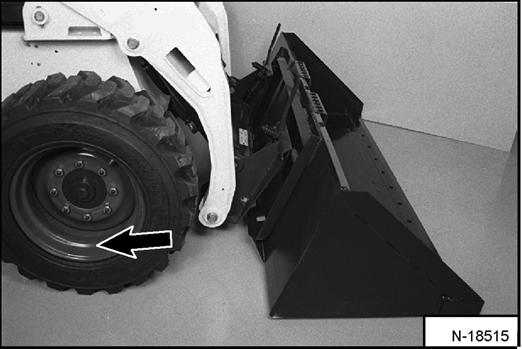
Push and hold the BOB-TACH "WEDGES UP" Switch (Front Accessory Panel) [Figure OI-62] until the wedges are fully raised.
Tilt the Bob-Tach forward.
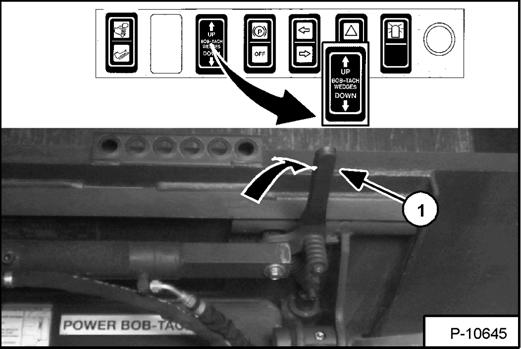
Operating Procedure
When operating on a public road or highway, always follow local regulations. For example: Slow Moving Vehicle Sign or direction signals may be required.
Always warm the engine and hydrostatic system before operating the loader.
Important
Machines warmed up with moderate engine speed and light load have longer life.
I-2015-0284
Operate the loader with the engine at full speed for maximum horsepower. Move the steering levers only a small amount to operate the loader slowly.
New operators must operate the loader in an open area without bystanders. Operate the controls until the loader can be handled at an efficient and safe rate for all conditions of the work area.
With a full bucket, go up or down the slope with the heavy end toward the top of the slope [Figure OI-64] & [Figure OI-65]
With empty bucket, go down or up the slope with the heavy end toward the top of the slope [Figure OI-66] & [Figure OI-67]
